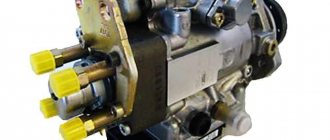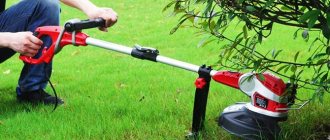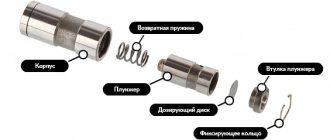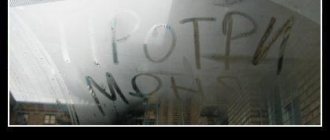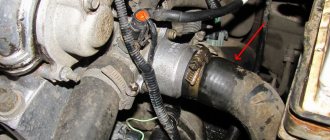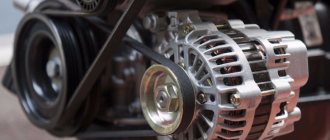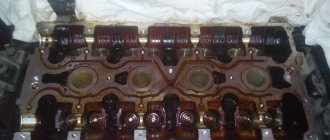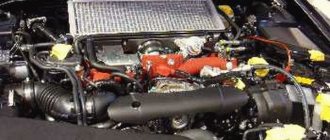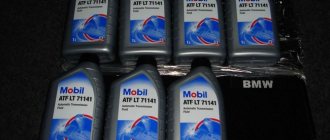Carburetor power units are actually a thing of the past. But many cars on the roads of our country still use this option for supplying fuel to the engine. For many, a carburetor turns out to be a fairly convenient means of replacing an injector, since the car becomes easier to repair and cheaper to operate. In most cases, the owner of a carburetor car can independently carry out basic maintenance work on the fuel supply system. In the case of an injector, this task should only be performed by specialists. For simple carburetor repairs, you do not need special equipment, but to work with an injector, such devices are simply necessary. Therefore, such a part of the engine power system has certain advantages. Interestingly, these advantages force many to change the injector to a carburetor, which is not difficult at all.
Problems that arise with the carburetor can be very different. One of the common problems is that the engine stops working after the car has completely warmed up. The driver has to increase the speed with the help of a choke, but this trick will not work on carburetors with auto-choke. Eventually, the engine will stall as soon as you release the gas pedal. At every traffic light, intersection and pedestrian crossing, the driver begins to curse fate, red lights and innocent pedestrians, and the carburetor continues to stall and refuses to work normally, despite very expensive gasoline. Let's figure out the nature of this trouble.
Cars with gasoline engines
A gasoline engine may not start after warming up quite often, especially when operating in low temperatures. The fact is that the fuel remaining in the chamber begins to evaporate quickly due to elevated temperatures. Vapors fill all cavities, including the carburetor, manifold, and air filter. As a result, fuel levels in the float chamber decrease and gas plugs occur. The duration of this process depends on the design of the fuel system and on the external temperature conditions.
That is, the reason why a gasoline engine does not warm up after warming up lies in excessive evaporation of gasoline and the formation of an enriched fuel mixture.
Cars with diesel engines: causes of malfunction and solutions
Considering the question of why a diesel engine does not start well after warming up, it can be noted that this problem when heating occurs among many owners of cars of all classes. Unlike a gasoline engine, the problems of a diesel engine are not so obvious and trivial.
This problem is common among domestic and imported cars. The reasons for this phenomenon, when the machine refuses to work, are varied:
- Problems with the fluid temperature control sensor. The sensor that records and displays information about the coolant temperature has failed, resulting in the fuel mixture being supplied incorrectly.
- If the electronic device does not function correctly or breaks down, it receives an incorrect impulse, the fuel supply adjustment is disrupted, and after warming up the engine does not start.
- Depressurization of injectors when heated, through which diesel fuel leaks over time. It is found in excess in the combustion chamber, which interferes with the normal operation of the engine. You need to take out the injector and see how wet it is.
- Incorrect operation of the fuel injection pump when heated; in diesel engines this element is often subject to malfunctions. The problem is solved by cooling the rear area of the pump and trying to start again, and the way out of the situation is to replace the plunger pair and bushings.
- Malfunctions of the injector sensors responsible for fuel injection. As a result, the injection angle changes; to solve the problem, it is necessary to correctly adjust the direction. It is recommended to check the operation of the idle speed and pressure regulators.
In fact, there are few common causes and problems of hot starting, and if you know the right solutions to eliminate them, you can avoid unforeseen consequences and make the driving process more comfortable.
Don’t immediately panic and go to a service station to find out why the car won’t start. Problems may lie in trivial things.
Chevrolet Niva starts and stalls when cold, what should I do?
Perhaps the reason should be looked under the hood?
After a long period of parking, the engine starts, runs for a few seconds, and then stalls. There may be several reasons for such a malfunction, but let’s imagine that the diagnostic station is 300 km away from us, and we need to find the cause. We proceed as follows.
Looking at the candles
When using spark plugs with cracks, current leaks through the insulator to the spark plug body.
We unscrew the spark plugs and assess their condition.
If the spark plugs are flooded or wet, then there is a possibility that the idle speed sensor did not turn on, the throttle unit sent the wrong signal to the ECU, which in turn sent too much fuel through the injectors.
In addition, a common culprit for a malfunction with such symptoms is the throttle position sensor. With a high degree of probability, the spark plugs could fail.
Listening to the fuel pump
Niva Chevrolet fuel pump under the seat.
Turn on the ignition and listen to see if the fuel pump is working.
There is a possibility that fuel is not supplied to the ramp, and the engine flared only due to the remaining gasoline in the fuel line.
If this version is confirmed, then the engine will no longer start, the fuel pump needs to be repaired, the fine filter or mesh, or the coarse filter on the fuel pump itself must be replaced.
Looking for an air leak
You should look for air leaks under the hood.
Air leaks in the power system can also cause a similar malfunction. A mixture that is too lean at startup will prevent the engine from running after a flash.
To verify this in field or garage conditions, just cover the air intake pipe of the air filter.
Often, air leaks can occur between the filter housing and the throttle assembly; sometimes excess air can enter through the junction of the intake manifold and the block head.
Cleaning the XX regulator
Old idle air control on a Niva Chevrolet.
Idle speed regulator . Considering the quality of our 92-octane gasoline, dirty IAC is not that uncommon.
If, after trying to start again, the car starts, but the speed fluctuates within the range of 1500–2000 rpm, you can safely remove the idle speed control, clean it or change it.
The regulator will also manifest itself in motion, when the car is coasting, the engine may stall or stall frequently, there may be no idle speed at all if the regulator is faulty or completely coked.
We control the MAF (Mass Air Flow Sensor)
Checking the operation of the mass air flow sensor.
For reference, at idle speed the Niva Chevrolet engine consumes about 17–19 kg of air , at 3 thousand revolutions - about 35 kg .
If the mass air flow sensor sends incorrect data to the electronic engine control unit, then the fuel supply changes accordingly, according to the data of this sensor. For example, a faulty mass air flow sensor sends data about 40 kg of air at idle, the ECU adjusts the fuel supply, as a result of which we again have flooded spark plugs and the engine refuses to work after starting without a throttle valve.
One of the most obvious symptoms of air flow meter failure is increased fuel consumption, whether at idle, at medium speeds, or under load.
These are not all the reasons that can lead to the fact that the Chevrolet Niva starts up and immediately stalls when cold, these are only what we are able to check on our own.
Ideally, the car is taken to a good diagnostician; only with the use of professional equipment can the cause of the incorrect operation of the electronics be 100% determined. Happy launches to everyone in any weather and good luck on the road!
The engine starts and stalls: reasons
In practice, this happens when the driver was able to start the car normally, and it began to work productively, but after the sensor recorded the current operating temperature, the engine stalls. Of course, this not only causes discomfort for drivers, but is also an unpleasant situation that requires establishing the exact reasons and taking specific actions.
Here are some common reasons why a motor may behave this way, and why it refuses to run hot:
- The car started up calmly and worked well, but then the engine began to behave strangely - it was malfunctioning and had trouble starting. This can only indicate that you filled the car with low quality or defective fuel. To solve the problem, you need to drain it, blow out the system and then replace the filter. It is recommended to replace the spark plugs. This reason why the engine refuses to work is a reason for every driver to behave prudently and always demand a receipt at the gas station (in case of subsequent problems, he will be able to voice his claims at the gas station).
- Another common reason when a car, or more precisely, the engine, stalls while warming up is the presence of malfunctions in the throttle valve area. The situation can be corrected through cleaning. Another problem may be the element position sensor. The solution is obvious - you will need to replace the TPS; the procedure can be done with your own hands in a short time.
- The car has normal fuel, but when it’s “hot” it stops functioning. If this phenomenon occurs with your car, you need to notice the air filter. To perform the work responsibly and efficiently, you should contact the service center specialists.
- A similar situation can occur if the car’s air filter is clogged. The difficulty is connected with the fact that the engine needs to “breathe”, but there is nothing to do this during warm-up. The fact is that the air mixture becomes too rich in fuel, which leads to the engine stalling. In this situation, it is necessary to replace the air filter.
- A problem with the fuel pump is a common malfunction in which the engine refuses to work. This picture is typical for many engines. The fuel pump can be repaired, but many experts advise replacing it with a new unit.
- There are situations when the generator “refuses” to provide the required charge to the car battery. If this happens, the best and first way to help is to tighten the drive belt. If such a measure does not help improve the situation, this may indicate a failure of the generator. If this breakdown occurs, restarting the unit will be impossible due to a dead battery.
Why does the Chevrolet Niva start and immediately stall when it’s cold?
It is better to visit an auto electrician to determine the root cause of the failure of the fuses. Ignition relay Replace with a new relay. Broken wire of the main components Having found out which wire is broken, you need to find out the reason why this happened. After that, install it in place.
Reasons why Niva 4x4 does not start (the starter does not turn)
Immobilizer Anti-theft system suffers from battery failure. There may be several reasons for such a malfunction, but let’s imagine that the diagnostic station is miles away from us and find the cause. We proceed as follows.
We look at the spark plugs When using spark plugs with cracks, current leaks through the insulator to the spark plug body. We unscrew the spark plugs and assess their condition. If the Chevrolet Niva spark plugs do not start well when they are cold or wet, then there is a possibility that the idle speed sensor did not turn on, the throttle unit sent the wrong signal to the ECU, which in turn supplied too much fuel through the injectors. In addition, a frequent culprit of Chevrolet Niva malfunctions is that it is difficult to start when cold; such symptoms are the throttle position sensor.
With a high degree of probability, the spark plugs could fail. Listening to the fuel pump Turn on the ignition and listen to see if the fuel pump is working. The battery voltage is within normal limits. The relay is checked with an ohmmeter or if it is overheated. Replace the starter solenoid relay. Burnt starter commutator, stuck brushes or severe wear. The starter does not turn or turns slowly.
With the starter removed, check the pressing force of the brushes to the commutator, their residual height, wear and tear. Chevrolet Niva does not start easily when cold. Repair the starter. If the commutator is severely worn, replace the starter. Break or short circuit in the starter armature winding. The starter does not rotate or rotates slowly. The serviceability of the winding is checked with an ohmmeter or by darkening of the insulation. Replace the starter. The starter spins, but the flywheel is motionless. Replace the clutch or starter. The ring gear rotates on the flywheel. The starter rotates, but the flywheel and crankshaft are motionless.
Summary
On modern cars, if the engine is malfunctioning and stalls “hot” when heated, special sensors can signal malfunctions. If you do not understand their location or meaning, you must contact a service station.
Please tell me. Why, when the engine warms up to operating temperature, it starts to work intermittently, and then it completely stalls and until it cools down, it won’t start, it starts sneezing, etc.... I think it’s the crankshaft position sensor, and it’s located in the distributor. Can it be done or is it just a replacement? or maybe I'm wrong about this? Tell. And by the way, the traction has become not very good. Either it's rushing or it's completely terrifying.
Cars suffer many breakdowns during operation, and one of the problems that most often and most worries owners is why the car stalls and does not. Let's consider the main causes of such phenomena, as well as possible actions to prevent them.
Cars with gasoline engines
A gasoline engine may not start after warming up quite often, especially when operating in low temperatures. The fact is that the fuel remaining in the chamber begins to evaporate quickly due to elevated temperatures. Vapors fill all cavities, including the carburetor, manifold, and air filter. As a result, fuel levels in the float chamber decrease and gas plugs occur. The duration of this process depends on the design of the fuel system and on the external temperature conditions.
That is, the reason why a gasoline engine does not warm up after warming up lies in excessive evaporation of gasoline and the formation of an enriched fuel mixture.
Cars with diesel engines: causes of malfunction and solutions
Considering the question of why a diesel engine does not start well after warming up, it can be noted that this problem when heating occurs among many owners of cars of all classes. Unlike a gasoline engine, the problems of a diesel engine are not so obvious and trivial.
This problem is common among domestic and imported cars. The reasons for this phenomenon, when the machine refuses to work, are varied:
- Problems with the fluid temperature control sensor. The sensor that records and displays information about the coolant temperature has failed, resulting in the fuel mixture being supplied incorrectly.
- If the electronic device does not function correctly or breaks down, it receives an incorrect impulse, the fuel supply adjustment is disrupted, and after warming up the engine does not start.
- Depressurization of injectors when heated, through which diesel fuel leaks over time. It is found in excess in the combustion chamber, which interferes with the normal operation of the engine. You need to take out the injector and see how wet it is.
- Incorrect operation of the fuel injection pump when heated; in diesel engines this element is often subject to malfunctions. The problem is solved by cooling the rear area of the pump and trying to start again, and the way out of the situation is to replace the plunger pair and bushings.
- Malfunctions of the injector sensors responsible for fuel injection. As a result, the injection angle changes; to solve the problem, it is necessary to correctly adjust the direction. It is recommended to check the operation of the idle speed and pressure regulators.
In fact, there are few common causes and problems of hot starting, and if you know the right solutions to eliminate them, you can avoid unforeseen consequences and make the driving process more comfortable.
Don’t immediately panic and go to a service station to find out why the car won’t start. Problems may lie in trivial things.
Chevrolet Niva stalls while driving | Chevrolet
Chevrolet Niva stalls while driving
It didn't stall. He made it clear that something was wrong. Symptoms - with constant pressure on the gas pedal, the engine periodically worked as if a heavy load was attached to the car.
The engine pulls, but the wheels do not move, they stop. The oil light came on. The thought came to me - maybe the clutch is giving out? But then why won’t the car start?! The clutch is not there at all.
Why does my car stall while driving and then start? Causes and troubleshooting
In the end, I just went to a friend of mine, he diagnosed the problem for me, and since the sensor, although not cheap, will at least remain for later, if now there is another problem, then I went and bought it. The engine started working.
And then I read somewhere that the diagnostics do not show a problem with the DHC. The engine in a Chevrolet Niva stalls on the throttle while driving, holding the wrong angles, but the DXH will not determine it.
By the way, if the car stalls when you try to start, you can still drive. Apply the gas pedal and hold it so that the speed does not drop. While driving, try to shift and brake very quickly without pressing the clutch.
Stand at a traffic light with the handbrake on.
But this is the best way to get to the service center or to the garage without a tow truck. The most difficult situation is braking down a hill.
You need both brake and gas at the same time. Avoid such places. And so, you can fix it on the road.
Throttle position sensor 2. Is the engine running rough? Sanya BC swears at the coolant temperature sensor.
Could this have an impact by any chance? Something tells me that the ignition module is showing off and will soon die. Most likely the ignition module. I looked through everything on the main forum, there are a lot of problems like this.
Today I’ll install a new one and try it!!
The most interesting thing is that when solving this problem, I read a lot about the quality of fuel, and about some kind of snot in the tanks, earth, clay, etc. Yesterday I climbed into the tank, the fuel is clean, the tank is clean, of course there is a small residue from the additives, it remains on my fingers like graphite chips.
So I’m moving from 95 to 92 to reduce the amount of additives, and therefore this residue that clogs the filters. Yuri The price is cheap.
Maybe the fuel pump itself is faulty. It overheats and does not create the required pressure.
Why MZ: MZ cannot die completely in principle. When it warms up, you give the gas harder, somewhere somewhere it clicks and breaks through, and 2 cylinders stop working normally.
Hence the immediate failure. There is a feeling that when you add gas, it’s as if a truck was added on a tie. The MH is located directly on the block, hence its heating.
The engine starts and stalls: reasons
In practice, this happens when the driver was able to start the car normally, and it began to work productively, but after the sensor recorded the current operating temperature, the engine stalls. Of course, this not only causes discomfort for drivers, but is also an unpleasant situation that requires establishing the exact reasons and taking specific actions.
Here are some common reasons why a motor may behave this way, and why it refuses to run hot:
- The car started up calmly and worked well, but then the engine began to behave strangely - it was malfunctioning and had trouble starting. This can only indicate that you filled the car with low quality or defective fuel. To solve the problem, you need to drain it, blow out the system and then replace the filter. It is recommended to replace the spark plugs. This reason why the engine refuses to work is a reason for every driver to behave prudently and always demand a receipt at the gas station (in case of subsequent problems, he will be able to voice his claims at the gas station).
- Another common reason when a car, or more precisely, the engine, stalls while warming up is the presence of malfunctions in the throttle valve area. The situation can be corrected through cleaning. Another problem may be the element position sensor. The solution is obvious - you will need to replace the TPS; the procedure can be done with your own hands in a short time.
- The car has normal fuel, but when it’s “hot” it stops functioning. If this phenomenon occurs with your car, you need to notice the air filter. To perform the work responsibly and efficiently, you should contact the service center specialists.
- A similar situation can occur if the car’s air filter is clogged. The difficulty is connected with the fact that the engine needs to “breathe”, but there is nothing to do this during warm-up. The fact is that the air mixture becomes too rich in fuel, which leads to the engine stalling. In this situation, it is necessary to replace the air filter.
- A problem with the fuel pump is a common malfunction in which the engine refuses to work. This picture is typical for many engines. The fuel pump can be repaired, but many experts advise replacing it with a new unit.
- There are situations when the generator “refuses” to provide the required charge to the car battery. If this happens, the best and first way to help is to tighten the drive belt. If such a measure does not help improve the situation, this may indicate a failure of the generator. If this breakdown occurs, restarting the unit will be impossible due to a dead battery.
Chevrolet Niva starts and stalls when cold, what should I do?
Perhaps the reason should be looked under the hood?
After a long period of parking, the engine starts, runs for a few seconds, and then stalls. There may be several reasons for such a malfunction, but let’s imagine that the diagnostic station is 300 km away from us, and we need to find the cause. We proceed as follows.
Looking at the candles
When using spark plugs with cracks, current leaks through the insulator to the spark plug body.
We unscrew the spark plugs and assess their condition.
If the spark plugs are flooded or wet, then there is a possibility that the idle speed sensor did not turn on, the throttle unit sent the wrong signal to the ECU, which in turn sent too much fuel through the injectors.
In addition, a common culprit for a malfunction with such symptoms is the throttle position sensor. With a high degree of probability, the spark plugs could fail.
Listening to the fuel pump
Niva Chevrolet fuel pump under the seat.
Turn on the ignition and listen to see if the fuel pump is working.
There is a possibility that fuel is not supplied to the ramp, and the engine flared only due to the remaining gasoline in the fuel line.
If this version is confirmed, then the engine will no longer start, the fuel pump needs to be repaired, the fine filter or mesh, or the coarse filter on the fuel pump itself must be replaced.
Looking for an air leak
You should look for air leaks under the hood.
Air leaks in the power system can also cause a similar malfunction. A mixture that is too lean at startup will prevent the engine from running after a flash.
To verify this in field or garage conditions, just cover the air intake pipe of the air filter.
Often, air leaks can occur between the filter housing and the throttle assembly; sometimes excess air can enter through the junction of the intake manifold and the block head.
Cleaning the XX regulator
Old idle air control on a Niva Chevrolet.
Idle speed regulator . Considering the quality of our 92 gasoline, dirty IAC is not that uncommon.
If, after trying to start again, the car starts, but the speed fluctuates within the range of 1500–2000 rpm, you can safely remove the idle speed control, clean it or change it.
The regulator will also manifest itself in motion, when the car is coasting, the engine may stall or stall frequently, there may be no idle speed at all if the regulator is faulty or completely coked.
We control the MAF (Mass Air Flow Sensor)
Checking the operation of the mass air flow sensor.
For reference, at idle speed the Niva Chevrolet engine consumes about 17–19 kg of air , at 3 thousand revolutions - about 35 kg .
If the mass air flow sensor sends incorrect data to the electronic engine control unit, then the fuel supply changes accordingly, according to the data of this sensor. For example, a faulty mass air flow sensor sends data about 40 kg of air at idle, the ECU adjusts the fuel supply, as a result of which we again have flooded spark plugs and the engine refuses to work after starting without a throttle valve.
One of the most obvious symptoms of air flow meter failure is increased fuel consumption, whether at idle, at medium speeds, or under load.
These are not all the reasons that can lead to the fact that the Chevrolet Niva starts up and immediately stalls when cold, these are only what we are able to check on our own.
Ideally, the car is taken to a good diagnostician; only with the use of professional equipment can the cause of the incorrect operation of the electronics be 100% determined. Happy launches to everyone in any weather and good luck on the road!
Summary
On modern cars, if the engine is malfunctioning and stalls “hot” when heated, special sensors can signal malfunctions. If you do not understand their location or meaning, you must contact a service station.
Colleagues, help me with this problem. When cold it starts up clearly and runs/drives until it warms up to operating temperature. After heating, it stalls stupidly and then it is impossible to start. When switching to gas, the same symptoms. A friend advised me to replace the spark plugs (they were tired), but this did not help. What is it?
To be continued: After removing the alarm, the car worked uninterruptedly for two days. On Monday, I picked up my wife from work and on the way back the same crap. The problem remained unresolved (In short, I was on a business trip for a couple of days and didn’t work on the car. Yesterday, we brought the same Lanos and transferred the ignition module from it, and lo and behold, my car started working. But after putting my cat to him, his car also started working as expected . Then we did this replacement several times, the result is that my coil works on his car, and his on mine. It turned out to be a temporary change, like for a couple of hours to check while running. Conclusion, he drove my coil and everything is fine with him, but I drove his coil and everything was fine too. As soon as they put my coil back on me, the car barely starts, fires, stalls, etc. You can buy a new coil, but the question is - is this the problem?! Colleagues, what's wrong?
The failure of the power unit to operate when cold or after warming up to a certain temperature may indicate a fairly wide list of possible problems. The engine begins to stall both suddenly and to work unstably in different modes, after which the internal combustion engine stops.
In this article we will talk about the reasons why the engine stops at idle, as a result of which a warm engine stalls, why a car with a hot engine stalls while driving, etc.
Read in this article
Let's sum it up
Fine cars with carburetor engines have become industrial history, but they are still widely represented on the roads. That is why you can use the ideas presented in this publication, since there are still a lot of carburetor masters, and you can find the necessary spare parts in stores. If your car has problems with the quality of the fuel supply system, it’s time to fix all these problems. You can quite easily obtain high quality operation of the power unit and fuel system if you simply take care of all the important components of the car.
For the carburetor to work properly, it simply needs to be cleaned occasionally. This point is quite important for every car operating in Russia. Fuel quality, atmospheric pollution - all this affects the normal operation of the engine. It is enough to carry out a high-quality cleaning of the fuel supply system every few years by performing certain maintenance processes to ensure long-term and high-quality operation of all engine systems. How did you maintain a carburetor car?
The failure of the power unit to operate when cold or after warming up to a certain temperature may indicate a fairly wide list of possible problems. The engine begins to stall both suddenly and to work unstably in different modes, after which the internal combustion engine stops.
In this article we will talk about the reasons why the engine stops at idle, as a result of which a warm engine stalls, why a car with a hot engine stalls while driving, etc.
Read in this article
A hot engine stalls while driving or idling
Let's start with the fact that the symptoms and signs of this problem can manifest themselves in different ways. Quite often, the power unit may stall in idle mode, and unstable operation and complete stop of the internal combustion engine often occurs after the engine has warmed up.
First of all, diagnostics should begin with checking the spark plugs and their condition. At the same time, high-voltage armored wires should also be checked. This must be done because there may be weak sparking or no spark at all on the spark plug electrodes. Interruptions in the spark lead to serious malfunctions in the operation of the engine, as a result of which both the cold unit and the engine stalls after warming up. Replacing spark plugs and high-voltage wires often helps solve the problem.
Spark plug
Problems arise due to the lack of a spark, and may arise due to the appearance of soot and dirt, which prevents the formation of a spark. If there is this deposit or dirt on the contacts, then it is advisable to change the fuel to a higher quality one, and you should also check the condition of the oil supply system, since a malfunction of the sensor that regulates the oil supply leads to the spark plugs splashing. Also, the appearance of oil indicates that there are problems in the cylinders. Therefore, if you see the presence of all the above phenomena, then it is advisable to diagnose the engine in a car service center, and if the reasons for their occurrence are not eliminated in time, this can lead to an expensive replacement of pistons with jet thrusts.
Other reasons why the engine stalls when hot
In addition to the above material, I would like to note a number of malfunctions that lead to a sudden stop of a hot engine while driving. The unit may stall while driving if the timing belt or chain is broken. This situation means that in most cases the power unit will require expensive repairs, since as a result of a break the valves are bent, piston defects and other damage to engine elements occur.
If the engine stalls while driving through deep puddles or other water obstacles, then there is a high probability of water getting into the cylinders or the elements of the ignition system getting wet. In the first case, water enters the combustion chambers through the air intake. Since water is incompressible, the engine is severely damaged, connecting rods bend, cracks appear in the cylinder block, etc. After a water hammer, there is usually a need to overhaul the engine. In the second case, the problem is not critical, since after removing the moisture, the functionality of the ignition system and power unit can often be restored.
Also, a car may stall when hot if there is too little fuel in the fuel tank. Quite often the engine stops when driving uphill. The fact is that during a long climb, the car is in a position for a long time when the fuel tank is tilted and the fuel level is not enough to supply through the fuel intake. It is quite obvious that in this case the engine will stall.
